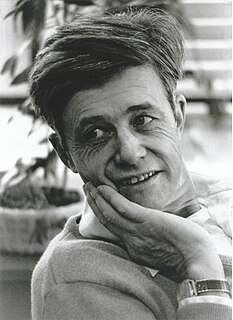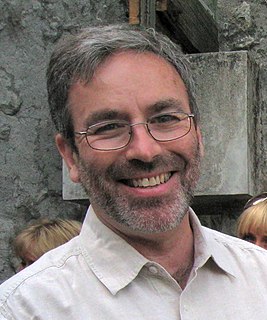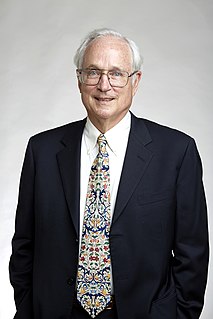
Ada is a structured, statically typed, imperative, and object-oriented high-level computer programming language, extended from Pascal and other languages. It has built-in language support for design-by-contract, extremely strong typing, explicit concurrency, tasks, synchronous message passing, protected objects, and non-determinism. Ada improves code safety and maintainability by using the compiler to find errors in favor of runtime errors. Ada is an international standard; the current version is defined by ISO/IEC 8652:2012.
APL is a programming language developed in the 1960s by Kenneth E. Iverson. Its central datatype is the multidimensional array. It uses a large range of special graphic symbols to represent most functions and operators, leading to very concise code. It has been an important influence on the development of concept modeling, spreadsheets, functional programming, and computer math packages. It has also inspired several other programming languages.
A compiler is a computer program that transforms computer code written in one programming language into another programming language. Compilers are a type of translator that support digital devices, primarily computers. The name compiler is primarily used for programs that translate source code from a high-level programming language to a lower level language to create an executable program.

Fortran is a general-purpose, compiled imperative programming language that is especially suited to numeric computation and scientific computing.
Mesa is a programming language developed in the late 1970s at the Xerox Palo Alto Research Center in Palo Alto, California, United States. The language name was a pun based upon the programming language catchphrases of the time, because Mesa is a "high level" programming language.
Pascal is an imperative and procedural programming language, which Niklaus Wirth designed in 1968–69 and published in 1970, as a small, efficient language intended to encourage good programming practices using structured programming and data structuring. It is named in honor of the French mathematician, philosopher and physicist Blaise Pascal.

Turing is a Pascal-like programming language developed in 1982 by Ric Holt and James Cordy, then of University of Toronto, in Toronto, Ontario, Canada. Turing is a descendant of Euclid, Pascal and SP/k that features a clean syntax and precise machine-independent semantics.
In computer science, a compiler-compiler or compiler generator is a programming tool that creates a parser, interpreter, or compiler from some form of formal description of a programming language and machine. The input may be a text file containing the grammar written in BNF or EBNF that defines the syntax of a programming language, and whose generated output is some source code of the parser for the programming language, although other definitions exist. Usually, the resulting source code will have to be extended upon before a complete compiler emerges.
JOVIAL is a high-level computer programming language similar to ALGOL, specialized for the development of embedded systems.

Kenneth Eugene Iverson was a Canadian computer scientist noted for the development of the programming language APL. He was honored with the Turing Award in 1979 "for his pioneering effort in programming languages and mathematical notation resulting in what the computing field now knows as APL; for his contributions to the implementation of interactive systems, to educational uses of APL, and to programming language theory and practice".
William Allan Wulf is a computer scientist notable for his work in programming languages and compilers. Until June 2012, he was a University Professor and the AT&T Professor of Engineering and Applied Sciences in the Department of Computer Science at the University of Virginia.
The Syntax/Semantic Language (S/SL) is an executable high level specification language for recursive descent parsers, semantic analyzers and code generators developed by James Cordy, Ric Holt and David Wortman at the University of Toronto in 1980.
SP/k is a programming language developed circa 1974 by R.C. Holt, D.B. Wortman, D.T. Barnard and J.R. Cordy as a subset of the PL/I programming language designed for teaching programming. It was used for about a decade at over 40 universities, schools, and research laboratories in Canada and the United States.

James Reginald Cordy is a Canadian computer scientist and educator who is a Professor in the School of Computing at Queen's University. As a researcher he is currently active in the fields of source code analysis and manipulation, software reverse and re-engineering, and pattern analysis and machine intelligence. He has a long record of previous work in programming languages, compiler technology, and software architecture.

Per Brinch Hansen was a Danish-American computer scientist known for his work in operating systems, concurrent programming and parallel and distributed computing.
XPL is a programming language based on PL/I, a portable one-pass compiler written in its own language, and a parser generator tool for easily implementing similar compilers for other languages. XPL was designed in 1967 as a way to teach compiler design principles and as starting point for students to build compilers for their own languages.
Programming Language Design and Implementation (PLDI) is one of the ACM SIGPLAN's most important conferences. The precursor of PLDI was the Symposium on Compiler Optimization, held July 27–28, 1970 at the University of Illinois at Urbana-Champaign and chaired by Robert S. Northcote. That conference included papers by Frances E. Allen, John Cocke, Alfred V. Aho, Ravi Sethi, and Jeffrey D. Ullman. The first conference in the current PLDI series took place in 1979 under the name SIGPLAN Symposium on Compiler Construction in Denver, Colorado. The next Compiler Construction conference took place in 1982 in Boston, Massachusetts. The Compiler Construction conferences then alternated with SIGPLAN Conferences on Language Issues until 1988, when the conference was renamed to PLDI. From 1982 until 2001, the conference acronym was SIGPLAN 'xx. Starting in 2002, the initialism became PLDI 'xx, and in 2006 PLDI xxxx.
David R. Hanson is a Software Engineer who worked at Google until he retired in January 2012, working in programming languages, compilers, software tools, and programming environments. Before joining Google, he was with Microsoft Research, Princeton, University of Arizona, and Yale. He has written many journal and conference papers and two books: A Retargetable C Compiler: Design and Implementation with Chris Fraser, which describes lcc, a widely used compiler for Standard C, and C Interfaces and Implementations: Techniques for Creating Reusable Software.

Programming language theory (PLT) is a branch of computer science that deals with the design, implementation, analysis, characterization, and classification of programming languages and their individual features. It falls within the discipline of computer science, both depending on and affecting mathematics, software engineering, linguistics and even cognitive science. It is a well-recognized branch of computer science, and an active research area, with results published in numerous journals dedicated to PLT, as well as in general computer science and engineering publications.
Concurrent Euclid (ConEuc) is a concurrent descendant of the Euclid programming language designed by James Cordy and Ric Holt, then at the University of Toronto, in 1980. ConEuc was designed for concurrent, high performance, highly reliable system software, such as operating systems, compilers and embedded microprocessor systems. The TUNIS operating system, a Unix variant, was implemented entirely in Concurrent Euclid. ConEuc extends a core subset of Euclid with processes and monitors as well as language constructs needed for systems programming including separate compilation, variables at absolute addresses, type converters, long integers and other features.







